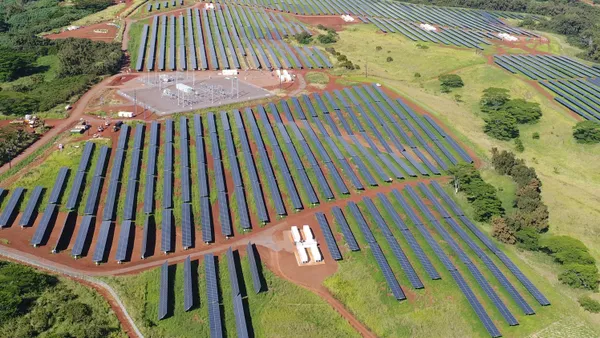Dive Brief:
- President Trump has signed an executive order directing the Environmental Protection Agency to review the Clean Power Plan and other greenhouse gas regulations for the power sector, a first step in rolling back the Obama-era climate rules.
- The order also directs the elimination of restrictions on federal coal leasing and reconsideration of rules governing methane regulations and the federal government's use of the social cost of carbon. The order does not mention the United Nations Paris climate accord, which a senior White House official said was still being considered.
- The Clean Power Plan, which aims to cut emissions from existing power plants 32% by 2030, is being challenged by a group of states in the D.C. Circuit Court. Trump's Department of Justice will ask the court to drop the case as it reviews the plan.
Dive Insight:
Trump's executive orders have been in the works for months, but the widely-expected move will still reverberate throughout the industry. The Clean Power Plan was President Obama's big climate rule and represented a key test of the EPA's authority to regulate emissions from the power sector.
Tuesday's order directs the EPA to initiate a review of the Clean Power Plan, governing existing plants, and accompanying regulations for carbon emissions from new sources.
The order also directs each executive department and agency in the federal government to identify regulations, rules, policies, and guidance documents that slow or stop domestic energy production, and launches a 170-day process to develop plans from each agency going forward.
Trump also ordered agencies to stop using Obama-era estimates of the social cost of carbon. Regulations affecting methane leaks at oil and gas production facilities and hydraulic fracturing will all be reviewed, and a moratorium on coal leases on federal lands will be eliminated.
While the coal moratorium can be lifted immediately, the CPP and other finalized Obama-era regulations will undergo formal policy reviews.
Though the White House has made clear it thinks the rules are an overreach, whether its reviews will result in new regulations for the power sector or simply the elimination of old ones remains to be seen.
"It could be revising, improving, updating, or if things are illegal or, again, if they don't conform to the President's priorities," an administration official told reporters this week. "It depends — it runs the gambit. That's what review is for."
If the administration chooses to replace the CPP with a less stringent rule, it could result in a narrower regulatory package that would require only small efficiency improvements to existing coal plants. EPA Administrator Scott Pruitt wrote such an alternative plan in 2014.
If no plan is offered to replace the CPP, the EPA could be at risk for lawsuits claiming that it is not fulfilling its obligation to regulate greenhouse gases, which the agency determined were a public health threat in a 2009 endangerment finding.
The Trump administration could respond in a variety of ways, including arguing that the EPA cannot regulate coal plants under two parts of the Clean Air Act (sections 111 and 112) simultaneously. The "double regulation" issue was a key point raised by petitioners in arguments against the CPP at the D.C. Circuit Court in September.
The administration could also seek to challenge the 2009 endangerment finding itself. That would be an uphill battle, energy lawyers say, because it would have to prove in court that GHGs are not a public health threat, but Pruitt has shown appetite for the fight before, signing onto a legal challenge to the finding in 2012.
Regardless of the path the White House chooses, the Clean Power Plan is essentially already dead as written. Implementation of the rules has been held since the Supreme Court put a judicial stay on them last year, and the D.C. Circuit is still reviewing the case. Even if it rules in favor of the rules, they will likely not be put into place.
Even without the federal carbon regulations, electric utilities are expected to continue to add renewable energy and natural gas generation over the coming decade, while continuing to retire coal plants. But a repeal would not come without costs.
According to clean energy think tank Energy Innovation, eliminating CPP will lead to $100 billion in extra costs by 2030, rising to $600 billion by 2050. The resulting impacts to air quality would lead to more than 40,000 premature deaths in 2030, and 120,000 in 2050.














